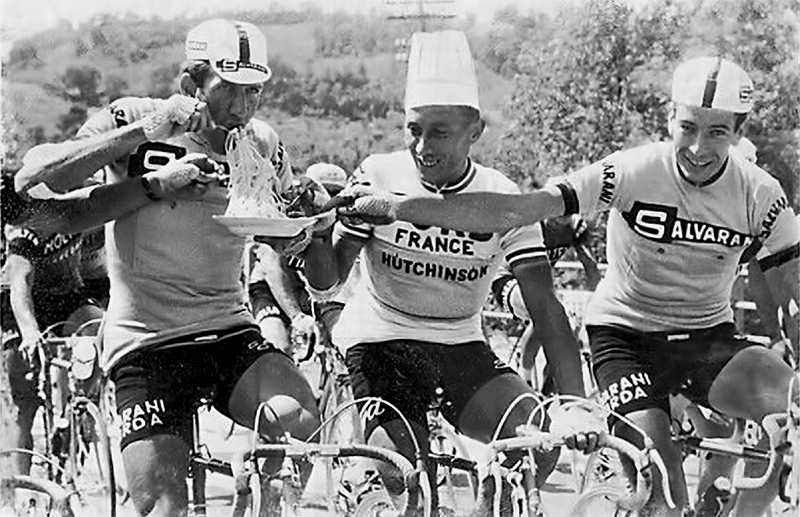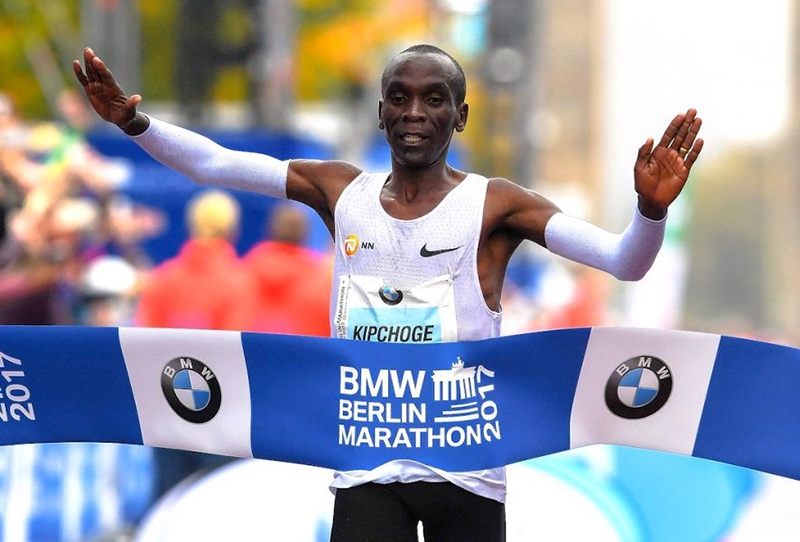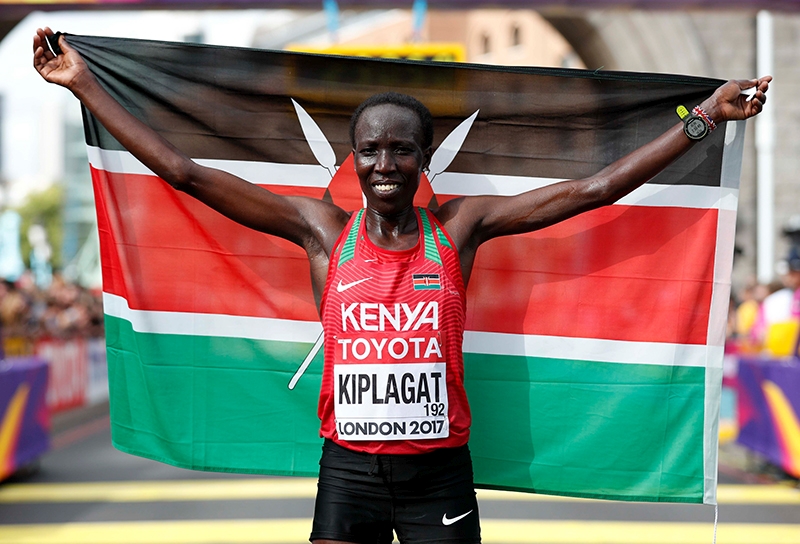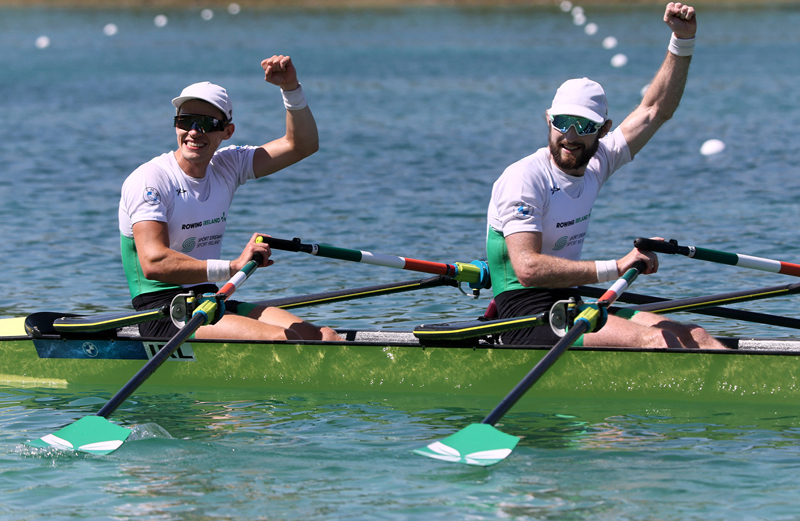You are viewing 1 of your 1 free articles. For unlimited access take a risk-free trial
Marathon endurance: will YOU hit the wall?

New research identifies which endurance athletes are most vulnerable to ‘hitting the wall’; what lessons can athletes learn to try and reduce the likelihood of this phenomenon occurring?
Marathoners call it “hitting the wall”. Cyclists call it “bonking”. More generally it can be described as “blowing up”. All of these terms refer to the sudden onset of completely debilitating fatigue that can occur later on in an endurance event such as a marathon, triathlon, long-distance bike race or any other ultra-distance event. When it strikes, this phenomenon can hugely slow even the most accomplished and elite endurance athletes. However, it can render lesser athletes completely useless. In the marathon for example, a runner who hits the wall may be unable to muster much more than a walking pace for the remainder of the race and may not even finish!‘Hitting the wall’ isn’t fatigue
Most marathon runners are familiar with the notion of hitting the wall (and cyclists with ‘bonking’ etc), and research shows that many have experienced it in person(1). For example, one early study on recreational runners surveyed 363 first-time marathoners to evaluate their reasons for attempting the marathon, their perceived outcomes from the event, and their experiences during the race(2). Overall, 56% of respondents reported hitting the wall, with just over 73% of them experiencing it after the 19 mile (30km) mark.However, it should be understood that truly hitting the wall is NOT the same as the feeling of generalized fatigue and discomfort that is just part and parcel of running the marathon distance or completing other similar/longer duration events(3,4). Hitting the wall differs from general fatigue in the following ways:
- The fatigue that develops is debilitating and may totally incapacitate the athlete.
- The onset of this fatigue is rapid and often without warning, taking the athlete by surprise.
Figure 1: Fat vs. carbohydrate burning at different exercise intensities

As pace/exercise intensity increases, the proportion of energy derived from fat drops rapidly, resulting in increased carbohydrate oxidation and more rapidly depleted liver and muscle reserves.
Whether or not a runner (or any other endurance athlete) will hit the wall depends on how quickly their glycogen stores deplete. This in turn depends on a combination of a runner’s aerobic capacity (or VO2 max), the density of muscle glycogen in the leg muscles, and the relative mass of their leg musculature(8). A higher aerobic capacity not allows a faster pace, but also is associated with more efficient fat burning. This leads to a faster marathon, provided there are adequate glycogen stores. Related to this, research has found that larger leg muscles - relative to body mass - are associated with a higher percentage of VO2 max that can be sustained; a lower body mass means a lower running energy cost, and larger leg muscles mean more capacity to store muscle glycogen(9).
Which runners are most at risk of hitting the wall?
Although the rationale for hitting the wall is understood, the often unexpected nature of this phenomenon suggests that many athletes are unaware of their relative personal risk of hitting the wall. This is particularly true for recreational and/or novice marathoners, who have little prior experience of what to expect. In an effort to clarify these risks, a brand new study published in the Journal ‘PLoS One’ has carried out a large-scale data analysis of late-race pacing collapse (the key identifier for hitting the wall) among recreational marathon runners(10).Using pacing data from more than four million race records, the researchers developed a pacing-based definition of hitting the wall, by identifying runners who had experienced a sustained period of slowing during the latter stages of the marathon. The researchers went on to calculate the cost of these slowdowns relative to estimates of the recent personal-best times of the runners and also compared the slowdowns according to each runner’s sex, age, and ability, in order to see who was most at risk.
The findings
When the data was analyzed, a number of trends relating to the likelihood of hitting the wall emerged (see figures 2 and 3):- Male runners were more likely to slow significantly (hit the wall) than female runners; 28% of male runners hit the wall compared with 17% of female runners.
- Hitting the wall was most frequent in the three years immediately before and immediately after setting a new marathon personal best time. For example, 36% of all runners hit the wall in the three years before a recent PB compared with just 23% in earlier years.
- Runners aged 40-50 were least likely to hit the wall.
- When runners hit the wall, males slow more than females; (typically slowing by 40% vs. 37% for females).
- Male runners slow over longer distances when hitting the wall compared to female runners (ie they tend to hit the wall earlier - 10.7km vs. 9.6km, respectively).
- When high-ability runners hit the wall, the proportion of time added to their marathon times are greater than lower-ability runners, despite the fact that the total number of minutes added tends to be greater in the lower-ability runners.
Figure 2: Relationship between age and hitting the wall

Proportion of races where runners hit the wall (HTW) by age. Blue squares = men; orange circles = women. Younger runners were most likely to hit the wall. Men were more likely to hit the wall regardless of age.
Figure 3: Relationship between ability and hitting the wall

Proportion of races where runners hit the wall (HTW) by ability. Blue squares = men; orange circles = women. Marathoners running around three hours were least likely to hit the wall. As above, men were more likely to hit the wall regardless of age.
Practical implications
There are a number of interesting findings from this study. Firstly, the male-female disparity – why are men more likely to hit the wall regardless of age/ability etc? One explanation is that the personality trait of competitiveness tends to be present to a higher degree in men than women, which means that female runners may be more considered and better at sticking to a pacing schedule, and not getting caught up in a rush of adrenaline! However, a more physiological factor might involve the fact that women tend to perform at a proportionately higher level in ultra-endurance events, most likely as a result of excellent fat adaptation ability(11).In terms of ability and personal bests, runners of good capability (around 3-hour times) – but not the most elite – suffered the least from hitting the wall. This is most likely because sub 3-hour runners are likely to be most competitive, and therefore pushing their pace the most – the scenario in which runners are most likely to become unstuck! As ability declines (and times increase above three hours), runners are likely to be less experienced, and therefore less expert at judging their pace, as well as less experienced at getting their nutrition right. Why would hitting the wall be more common in the three years before and after a PB? It’s hard to say but we can speculate that in the run up to a PB, runners are likely to race harder to achieve it. And having posted a new PB, runners are likely to be motivated to see if they can improve further!
Putting these factors together, the evidence suggests that using a level head and sticking to a well-designed and carefully judged pacing plan, together with optimized carbohydrate nutrition are key factors when seeking to minimize the risk of hitting the wall. Carbohydrate nutrition for endurance is something that we’ve discussed in a number of articles in Sports Performance Bulleting articles. Readers are directed to this article, which explains how athletes can ensure they arrive at the start line with muscles fully glycogen loaded. Readers are also advised to see this article on how to carbohydrate feed on the move in order to avoid hitting the wall. In terms of how to pace a marathon, readers are directed to this article.
References
- British Journal of Sports Medicine. 1998;32(3):229–234
- Perceptual and Motor Skills. 1982;54(3):963–969
- Applied Physiology of Marathon Running. Sports Medicine. 1985;2(2):83–99
- Marathon and Beyond. 2007;11(1):20–36
- PLoS Comput Biol. 2010;6(10):e1000960
- Journal of Applied Physiology. 1993;74(4):1921–1927
- Journal of Sports Analytics. 2018;4(3):229–242
- American Journal of Physiology Endocrinology And Metabolism. 1993;265(3):E380–E391
- Medicine and Science in Sports and Exercise. 2002;34(6):980–986
- PLoS One. 2021 May 19;16(5):e0251513
- Open Access J Sports Med. 2014; 5: 159–172.
Newsletter Sign Up
Testimonials
Dr. Alexandra Fandetti-Robin, Back & Body Chiropractic
Elspeth Cowell MSCh DpodM SRCh HCPC reg
William Hunter, Nuffield Health
Newsletter Sign Up
Coaches Testimonials
Dr. Alexandra Fandetti-Robin, Back & Body Chiropractic
Elspeth Cowell MSCh DpodM SRCh HCPC reg
William Hunter, Nuffield Health
Keep up with latest sports science research and apply it to maximize performance
Today you have the chance to join a group of athletes, and sports coaches/trainers who all have something special in common...
They use the latest research to improve performance for themselves and their clients - both athletes and sports teams - with help from global specialists in the fields of sports science, sports medicine and sports psychology.
They do this by reading Sports Performance Bulletin, an easy-to-digest but serious-minded journal dedicated to high performance sports. SPB offers a wealth of information and insight into the latest research, in an easily-accessible and understood format, along with a wealth of practical recommendations.
*includes 3 coaching manuals
Get Inspired
All the latest techniques and approaches
Sports Performance Bulletin helps dedicated endurance athletes improve their performance. Sense-checking the latest sports science research, and sourcing evidence and case studies to support findings, Sports Performance Bulletin turns proven insights into easily digestible practical advice. Supporting athletes, coaches and professionals who wish to ensure their guidance and programmes are kept right up to date and based on credible science.













